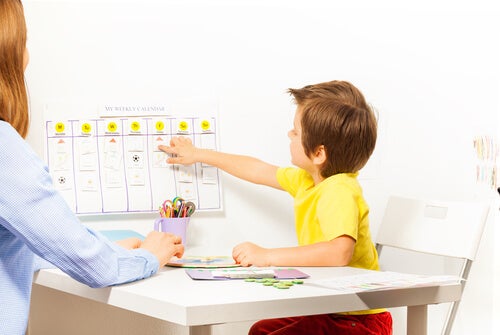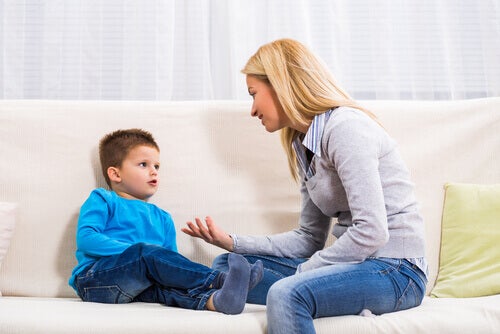Token Economy to Change Behavior

The token economy is a widely used behavior modification technique to promote and reinforce non-spontaneous behavior.
Many methodologies are aimed at changing specific habits. Generally, most take after programs based on operant behaviorism. These techniques rely on careful observation of a given behavior, followed by reward or punishment associated with one of its characteristics.
“A child whose behavior pushes you away is a child who needs connection before anything else.”
-Kelly Bartlett-
General phases of the token economy to change behavior
Most behavior modification programs follow the same guidelines:
- Determine the behavior you want to change.
- Formulate the goal as concretely as possible.
- Establish a baseline and hypothesis about the reason behind the behavior.
- Decide on a strategy to reinforce the desired behavior.
- Plan the treatment.
- Start the treatment.
- Discern any progress.
- Make modifications, if necessary.

Token economy
This is a method to change a set of behaviors at the same time. In addition, it makes it possible to control the entire situation of those involved in them.
This technique, widely used with children, consists of rewarding specific behaviors by means of tokens. They can be exchanged for goods or privileges.
While other techniques aim to decrease the probability of occurrence of a behavior, the token economy aims to increase it.
The way it works
The token economy procedure divides into two stages: implementation and fading.
Implementation
The first step in this phase would be to identify and concretely define the behavior you want to promote and reinforce. Subsequently, the goods or privileges to obtain by redeeming the earned tokens. You must also establish the conditions of the exchanges. For example, whether they can obtain the benefits immediately or if there’s a certain waiting period. In addition, what the maximum number of tokens they can exchange at a single time is.
Likewise, consider that, if undesired behavior takes place, they’ll have to give back and previously obtained tokens. On a more technical level, tokens function as a point system, so you must decide on the type of mark or object (stickers, stars, cards, etc.) to use.
Finally, create a method of registration for the exchange. For example, a board or set of boxes showing how many they’ve won, lost, or saved or how many they’ve used.
Development
The register should be visible or easily accessible during the implementation of the token economy. You must record all token movements on it.
At the beginning of the intervention, obtaining tokens should be easier and more frequent to motivate the person. In addition, there must be a specific reason for every earning or withdrawal. For example, “because their bedroom is sparkling clean”.
It’s important for both records and exchanges to not interfere too much with the situation. Similarly, the exchanges must happen without them being too celebrated. The “ritual” itself must be a priority over the emission of the target behavior if this situation is made an important event.
Fading of the token economy
Once you achieve the objectives, the next step is to phase out the token economy system. Here are some strategies you can use:
- Increase the turnaround time between tokens.
- Increase the criteria for obtaining tokens.
- Reduce the number of tokens they can obtain.
- Increase the number of tokens they must earn to obtain a benefit.
This way, the rewards will be there over a longer period of time until they eventually go away. However, the appearance of the target behavior will still be a requisite.

Applications
The effect a token economy has when you apply the technique overtime extends beyond the intervention itself and has obtained positive results for a wide variety of cases (not only with children).
For example, experts can apply it in hospitals or mental health centers with the objective of increasing self-care behaviors, social skills, or decreasing disruptive behaviors. In the case of children, one can use this technique both at school and at home. It’s less common but people also apply it in prisons or during couples therapy. Its main goal is to improve internal conflicts.
All cited sources were thoroughly reviewed by our team to ensure their quality, reliability, currency, and validity. The bibliography of this article was considered reliable and of academic or scientific accuracy.
- Baddeley, A. (1999). Adquisición de hábitos. En Baddeley, A. Memoria humana: teoría y práctica (pp.171-199). Madrid: McGraw-Hill.
This text is provided for informational purposes only and does not replace consultation with a professional. If in doubt, consult your specialist.








